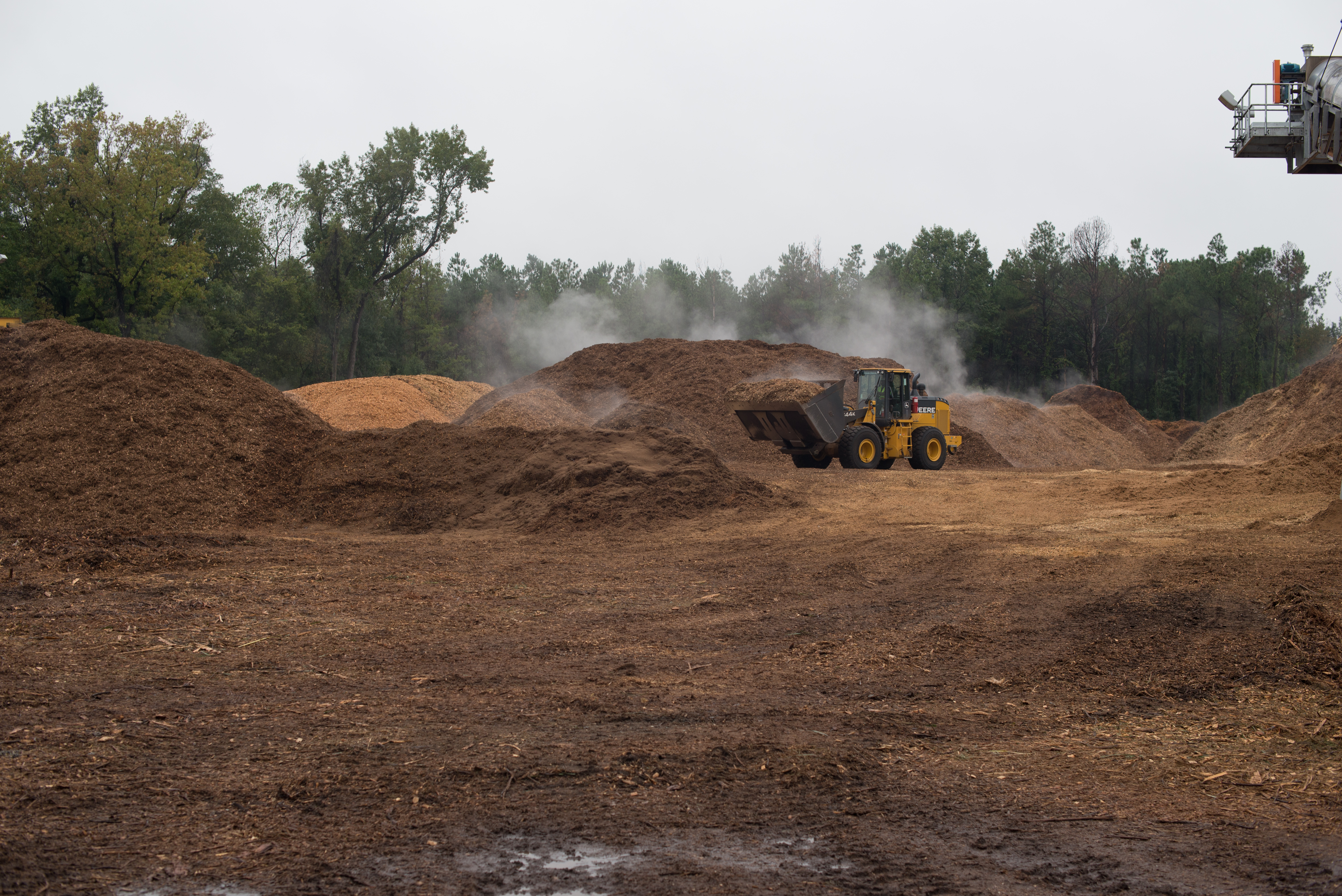South Carolina is known for its beaches and nice weather but recently has been getting attention for the abundance of forested land. The state has so much wood that the timber industry is comparable in profit to the booming tourist industry. Timber brings in 18.6 billion dollars with tourism bringing in slight more at $19.1 billion dollars.
South Carolina is looking at woody biomass energy production as a potential substitute for dwindling coal plants “[s]ince woody biomass, like coal, can be put in an incinerator at any time and burned, it can meet baseload demand” that coal already meets for the utility grid.Biomass plants use wood chips stored in large piles around the plant grounds to feed the fire. Often times the wood piles will steam and smoke caused by decomposition that naturally happens. The heat can sometimes cause “spontaneous combustion of fermenting woodchip or sawdust piles.”

EDF Biomass Power Plant woodchip piles in Harleyville, South Carolina
Wood pellet plants are different. They take waste wood products, turn them into sawdust, send the sawdust through a large dryer, and then compact them into a neat little wooden dowel. This takes most of the moisture out of the wood for easier, lightweight shipping across the Atlantic to Europe. Once in Europe, the pellets will be used in their woody biomass energy plants. This process is mainly done for shipping purposes since biomass plants in the United States use wood chips from surrounding forests and do not need to spend extra money on light wood pellets. Most plants have a wood chipper on site. Wood pellet plants are primarily for exporting USA wood in a convenient way.
With the paper industry decline and demand for tree thinnings, the biomass and pellet industry “offers to replace that decline with a fresh new demand. Where property owners might have been forced to sell land for development, now there is an opportunity to continue harvesting and replanting with tree seedlings.”
References
